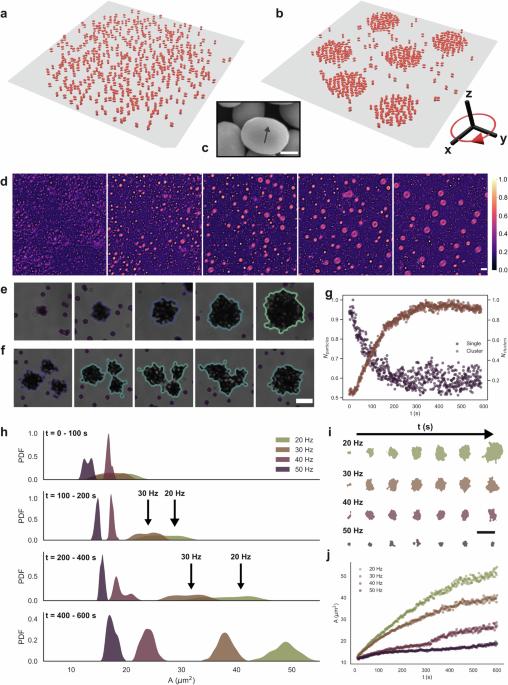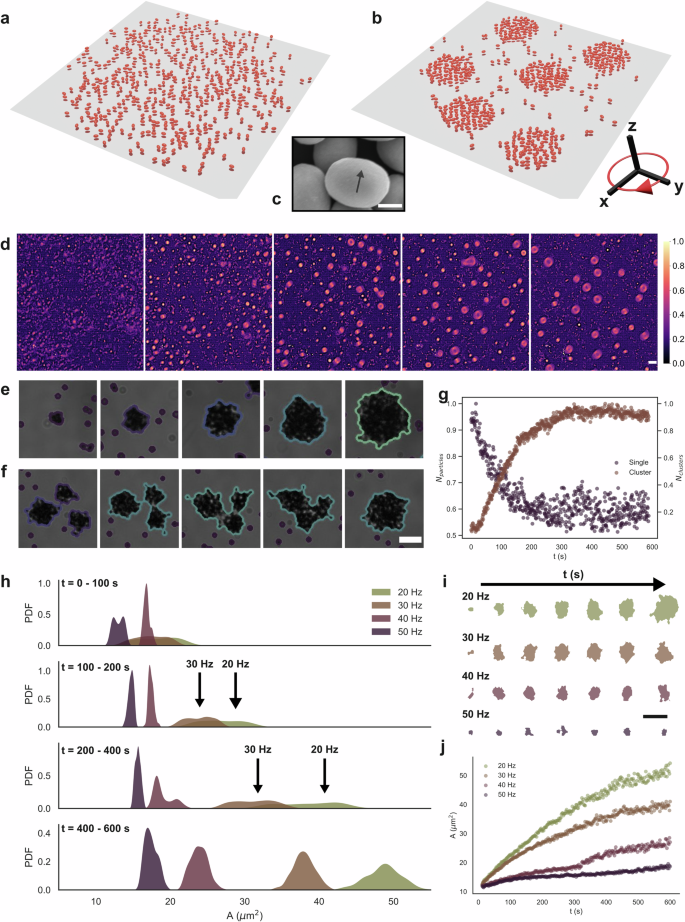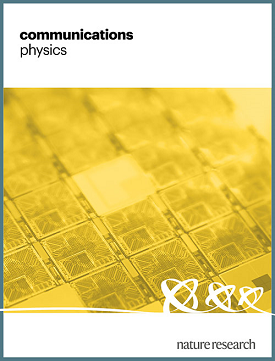控制活性手性流体中的胶体内聚状态
IF 5.4
1区 物理与天体物理
Q1 PHYSICS, MULTIDISCIPLINARY
引用次数: 0
摘要
液体中悬浮旋转粒子的组合构成了一类独特的活性物质系统,即手性流体。最近的致密手性流体实验包括由外部旋转磁场驱动的旋转胶体磁体。这些粒子通过磁力和流体动力相互作用,共同组织成以单向边缘流为特征的循环团簇。在这里,我们利用各向异性几何粒子之间的扩散性相互作用,从外部驱动旋转胶体的集体行为。我们的研究表明,这些纳米级界面流导致旋转胶体之间形成束缚态,并通过近场流体力学和化学作用使其稳定。在集体层面上,我们证明了增加的扩散蠕动相互作用会导致循环集群的结构内聚力下降,并促进集群的扩张,同时保持全局集群的相互连接性。在粒子周围轴不对称相互作用的促进下,形成了一个动态的互连网络,沿磁矩方向的吸引力偶极相互作用占主导地位。据观察,这一过程是完全可逆的,为致密手性流体中的新兴动力学提供了外部控制,为手性流体和更广泛形式的活性物质的新自组织途径铺平了道路。手性活性系统由旋转的组成粒子构成,这些粒子通过流体动力学相互作用自组织成复杂的结构。作者开发了通过在旋转粒子之间引入额外的化学相互作用来控制这些自组织结构的方法。本文章由计算机程序翻译,如有差异,请以英文原文为准。


Control of colloidal cohesive states in active chiral fluids
Ensembles of suspended spinning particles in liquids form a distinct category of active matter systems known as chiral fluids. Recent experimental instances of dense chiral fluids have comprised of spinning colloidal magnets powered by an external rotating magnetic field. These particles interact through both magnetic and hydrodynamic forces, organizing collectively into circulating clusters characterized by unidirectional edge flows. Here, we externally drive the collective behavior of spinning colloids by leveraging diffusiophoretic interactions among the geometrically anisotropic particles. We show that these nanoscale interfacial flows lead to the formation of bound states between spinning colloids that are stabilized through near-field hydrodynamic and chemical interactions. At a collective level, we demonstrate that added diffusiophoretic interactions cause a loss in structural cohesion of the circulating clusters and promote expansion, while preserving global cluster inter-connectivity. The expanded cluster state is characterized by the formation of a dynamic interconnected network promoted by axi-asymmetric interactions around particles with attractive dipolar interactions dominating along the direction of the magnetic moment. This process is observed to be entirely reversible, offering external control over the emergent dynamics in dense chiral fluids, paving the way for new self-organization routes in chiral fluids and broader forms of active matter. Chiral active systems are composed of spinning constituent particles that self-organize into complex structures through hydrodynamic interactions. The authors develop methods to control these self-organized structures by introducing additional chemical interactions between spinning particles.
求助全文
通过发布文献求助,成功后即可免费获取论文全文。
去求助
来源期刊

Communications Physics
Physics and Astronomy-General Physics and Astronomy
CiteScore
8.40
自引率
3.60%
发文量
276
审稿时长
13 weeks
期刊介绍:
Communications Physics is an open access journal from Nature Research publishing high-quality research, reviews and commentary in all areas of the physical sciences. Research papers published by the journal represent significant advances bringing new insight to a specialized area of research in physics. We also aim to provide a community forum for issues of importance to all physicists, regardless of sub-discipline.
The scope of the journal covers all areas of experimental, applied, fundamental, and interdisciplinary physical sciences. Primary research published in Communications Physics includes novel experimental results, new techniques or computational methods that may influence the work of others in the sub-discipline. We also consider submissions from adjacent research fields where the central advance of the study is of interest to physicists, for example material sciences, physical chemistry and technologies.
 求助内容:
求助内容: 应助结果提醒方式:
应助结果提醒方式:


